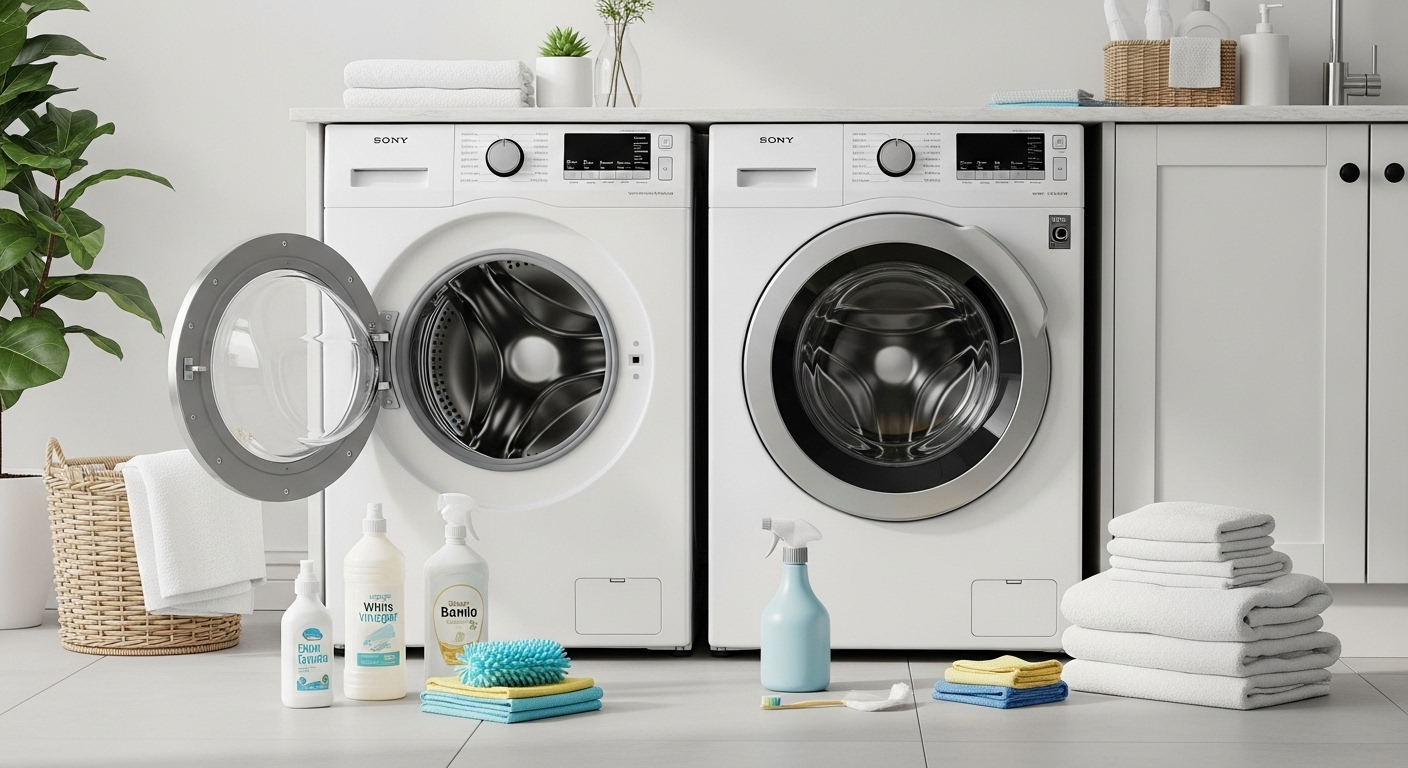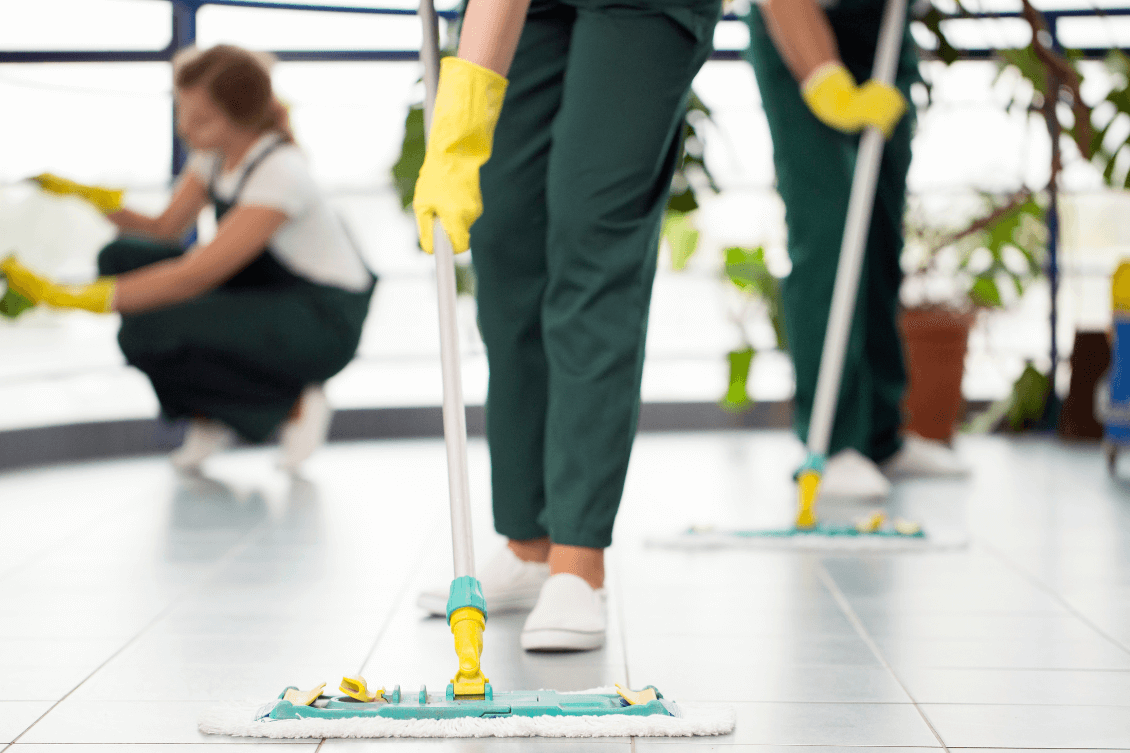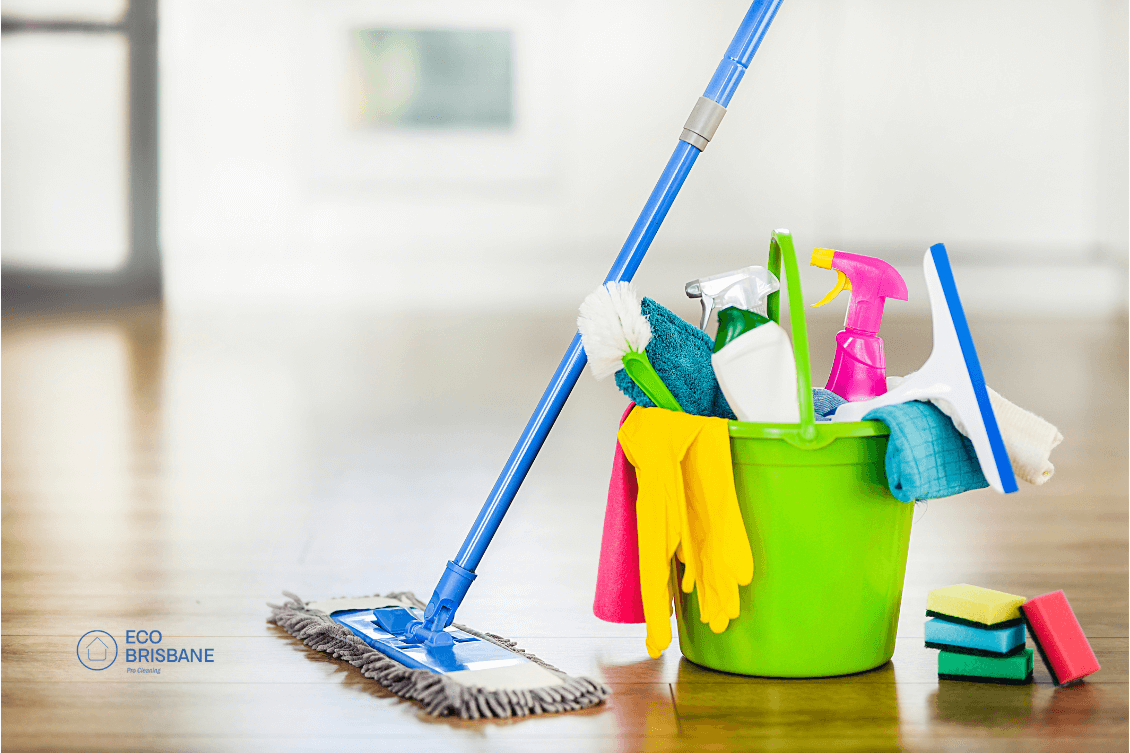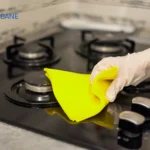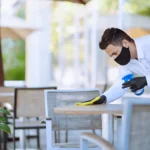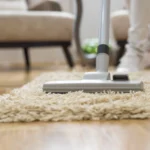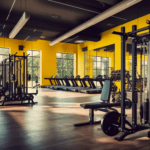If you notice a musty smell or dark patches on the walls, tiles, or other surfaces of your office kitchens and bathrooms, you are likely dealing with mould and mildew. And you know what, a study shows that 90% of total business operation costs are only for office staff.
How do they relate to mildew and mould growth in your office kitchens and bathrooms? Well, if the staff frequently breathe in a musty environment, they will be sick, which will hamper your office productivity.
So, you must effectively tackle mould and mildew in office bathrooms and kitchens by cleaning and preventing them. To do this, you need to understand the reasons behind their growth.
In this guide, we’ll walk you through everything you need to know about controlling, cleaning, and preventing mould and mildew in office bathrooms and kitchens.
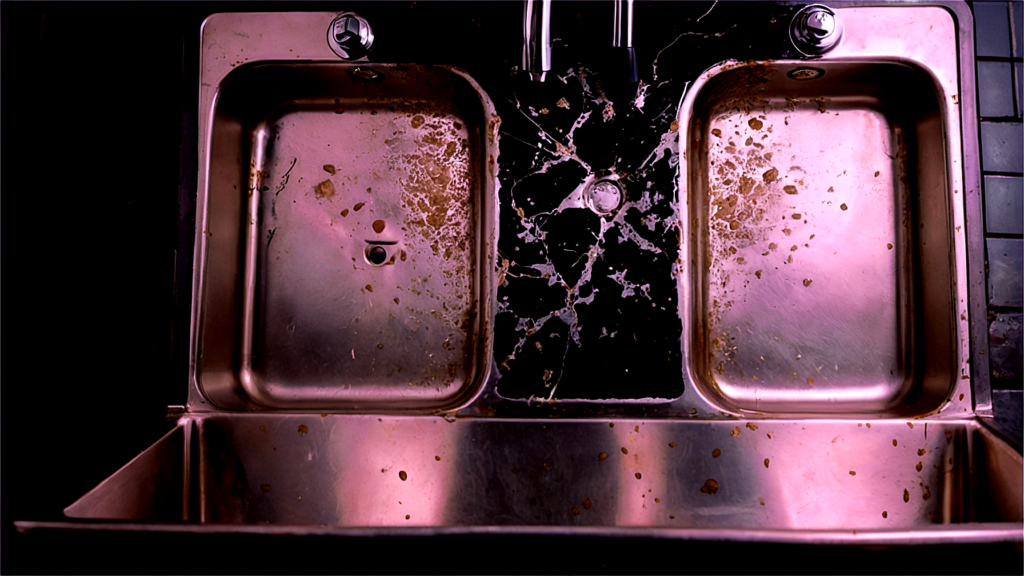
Understanding Mould and Mildew in Office Spaces
Mould and mildew are types of fungal growth that thrive in damp and poorly ventilated environments.
The mould’s structure is brush-like. It can look fuzzy and like cotton wool. The mould’s colour can be green, blue, grey, white, or orange.
On the other hand, mildew is likely cottony-white or greyish and looks downy or powdery.
By the way, people often use the terms mould and mildew interchangeably.
Why Does Mould and Mildew Grow?
To tackle the mould and mildew problems in the office bathrooms and kitchen, it is a must to know the reasons behind their growth.
Here, we have mentioned the causes of mould and mildew with proper explanations.
1. Poor Ventilation
Limited air circulation traps moisture in poor ventilation systems, and air can’t circulate through your kitchen and bathrooms. Without proper airflow, humidity levels rise, and condensation forms on surfaces like walls, ceilings, and tiles.
This persistent dampness provides the perfect breeding ground for fungal spores to thrive.
2. Poor Moisture Control and High Humidity Level
As we mentioned above, mould loves damp environments, and poor ventilation causes dampness, which finally leads to mould and mildew growth.
Aside from this, poor moisture control of other sources also causes mould and mildew. For example,
- Steam from hot water usage in the bathrooms,
- Leaky pipes and faucets in both the kitchen and bathrooms,
- improper sealing of surfaces and water leaks through the plumbing systems,
- Leaving wet towels and sponges,
- Poor drainage, etc., can cause moisture to rise.
When the humidity levels of the environment exceed 60%, it helps to grow the fungi.
3. Inadequate Cleaning
Inadequate cleaning allows moisture, dirt, and organic matter to accumulate.
Also, when you don’t clean surfaces in office kitchens and bathrooms regularly, soap scum, grease, and food particles provide a nutrient-rich breeding ground for fungal spores.
Besides, uncleaned damp areas—such as sinks, grout lines, and corners—trap moisture, accelerating mould growth. Adverse Health Effects of Mould and Mildew
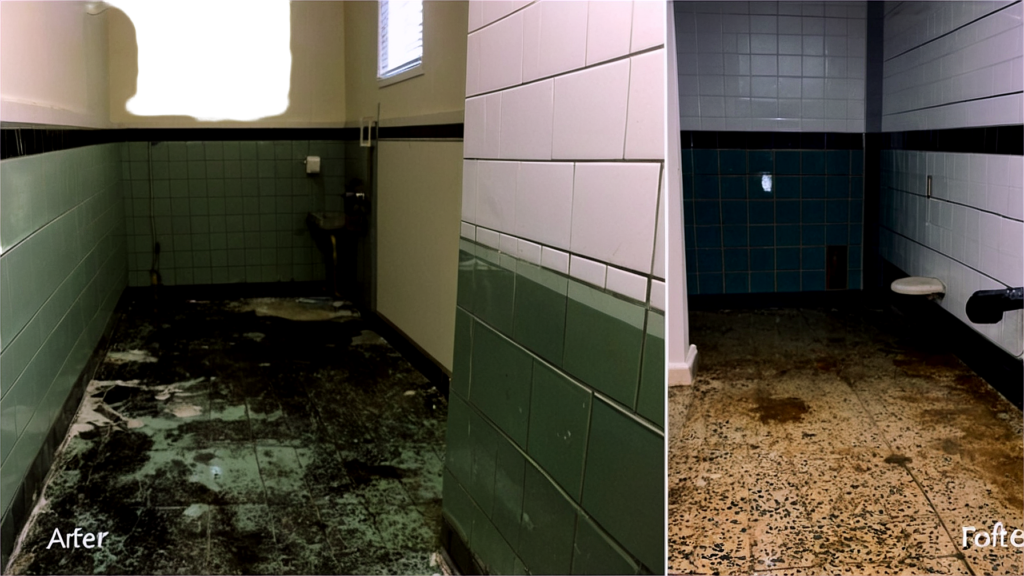
Adverse Health Effects of Mould and Mildew
Tackling mould and mildew is a must because these pose adverse health effects.
- Breathing in mould fragments and spores can cause health issues, such as
- Nasal congestion
- Coughing
- Sneezing
- Wheezing, and
- Respiratory infections, such as shortness of breath, and airway infections, such as aspergillosis.
- Mould and mildew can cause issues like eczema, skin rashes, itchy skin, eye irritation, and other fungal infections, particularly in those with weakened immune systems.
- Mould and mildew can cause mental health effects, such as frustration and anxiety, among the office staff due to being in an adverse environment for a prolonged time.
- Mould and mildew can cause severe asthma and make it chronic. According to Professor Van Nunen from NAC Australia, 40% of Australians are naturally predisposed to allergies.
- Mould and mildew can cause Chronic Inflammatory Response Syndrome, or CIRS. It is a progressive, multi-system biotoxin-related illness.
- Mould and mildew can cause poor indoor air quality, which can cause itchy and watery eyes and throat irritation.
How to Clean Mould and Mildew in Office Bathrooms and Kitchens
Once mould appears, it is crucial to remove it before it spreads. You can tackle mould and mildew problems in your office kitchen and bathrooms in two ways: cleaning and preventing.
In this section, we have discussed different cleaning methods for mould removal from office kitchens and bathrooms.
Method 1: Using Commercial Mould Cleaners
You can use different types of commercial mould cleaners to remove mould. Here are some examples and the application steps you can follow.
A. Bleach-Based Mould Remover
- Active Ingredient: Sodium hypochlorite (5-10%)
- Best for: Non-porous surfaces like tiles, countertops, and glass.
- How It Works: Bleach effectively kills mould spores on the surface by breaking down their protein structures and removing visible stains.
Application Steps:
- Dilute one part bleach with three parts water (if not using a ready-made cleaner).
- Spray or apply the cleaners with a sponge onto non-porous surfaces like tiles and sinks.
- Let it sit for 10–15 minutes before scrubbing.
- Wipe off the solution from the applied areas with a damp cloth and then rinse the surfaces with clean water.
- Special Instructions: Avoid using wood or drywall, as it does not penetrate porous materials and may cause discolouration.
B. Hydrogen Peroxide Cleaners
- Active Ingredient: Hydrogen peroxide (3-10%)
- Best for: Both porous and non-porous surfaces, including walls, grout, and ceilings.
Application Steps:
- Use undiluted or as per product instructions.
- Spray the cleaner directly on affected areas, including grout, ceilings, and porous surfaces like wood.
- Leave the cleaner for 10–20 minutes for full penetration on the surfaces.
- Now, scrub the applied areas with a brush and then wipe the cleaners with a dry cloth.
- Special Instructions: Works best in low-light areas, as exposure to sunlight can weaken hydrogen peroxide.
C. Enzyme-Based Mould Cleaners
- Active Ingredient: Beneficial bacteria and enzymes
- Best for: Natural surfaces like wood, fabric, and carpets.
Application Steps:
- Spray or apply directly onto organic surfaces like wood, upholstery, and carpets.
- Let it sit for several hours or overnight to allow enzymes to break down mould.
- Blot with a clean cloth and vacuum if necessary.
- Special Instructions: Though it works slowly, it is safer for your workplace.
2. Natural Household Cleaning Methods
If you prefer eco-friendly solutions, household ingredients like vinegar and baking soda will work for mildly moulded areas. Here’s how you use them.
A. Using Vinegar
- Active Ingredient: Acetic acid (5-7%)
- Best for: Tiles, grout, and bathroom fixtures. White vinegar is a natural acidic cleaner that penetrates porous surfaces and kills fungi due to its acidic characteristics.
Application Steps:
- Use undiluted white vinegar (or diluted with equal parts water for mild cases).
- Spray onto tiles, grout, and bathroom fixtures.
- Allow at least 60 minutes before scrubbing.
- Wipe with a damp cloth, but do not rinse—vinegar residue helps prevent regrowth.
- Special Instructions: Avoid using vinegar on stone surfaces like marble or granite, as the acidity can damage them.
B. Using Baking Soda
- Active Ingredient: Sodium bicarbonate (baking soda)
- Best for: All surfaces, including tiles, grout, wood, drywall, fabrics, and natural stone.
Application Steps:
- Mix one teaspoon of baking soda with two cups of water in a spray bottle (Proportionally).
- Shake the mix well and spray it directly onto mould-affected surfaces, including tiles, grout, etc.
- Let it sit for 10–15 minutes before scrubbing with a brush or sponge.
- Wipe with a damp cloth and allow the surface to dry completely.
3. Professional Deep Cleaning for Persistent Mould and Mildew
Well, you tried your heart and soul, but the mould is coming back after a few days. Or the mould is too stubborn and doesn’t go away with DIY cleaning.
In some cases, mould grows within walls, ceilings, or air vents, making it difficult to remove without professional help.
In such situations, we suggest professional remediation for severe infestations.
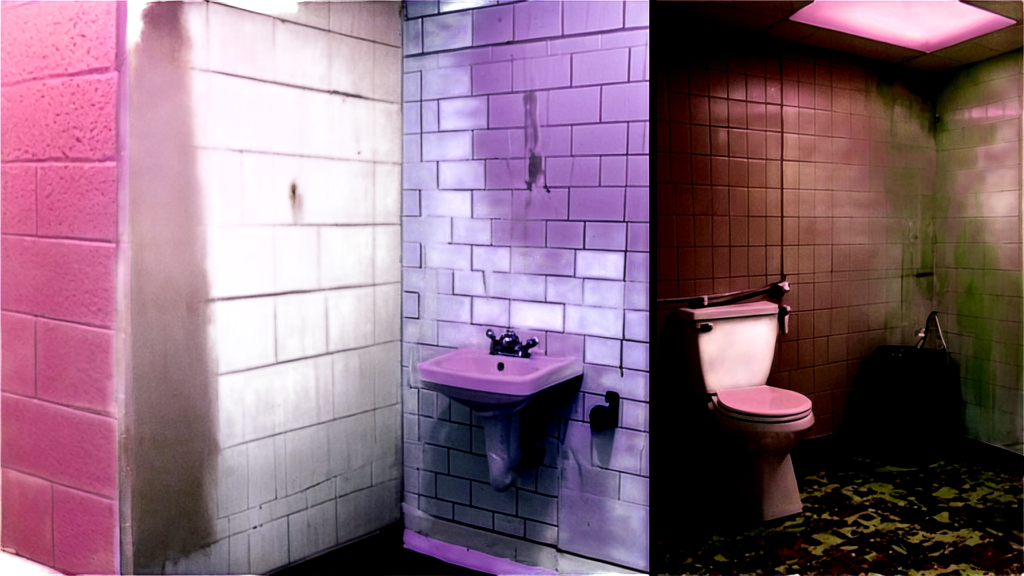
How to Prevent Mould and Mildew Growth in Office Kitchens and Bathrooms
Well, it is always better to prevent than to cure. Prevention is also easier to deal with than after it spreads.
Here’s how you can tackle mould and mildew in office bathrooms and kitchens by preventing them.
A. Improve Ventilation and Air Circulation
- Install ventilation systems like exhaust fans to reduce humidity. Also, don’t neglect to clean the kitchen exhaust fans regularly.
- Keep your kitchen and bathroom doors and windows open whenever possible. This allows proper air circulation.
- For more air circulation, use dehumidifiers.
B. Manage Moisture and Condensation Effectively
- Wipe down damp surfaces regularly.
- Fix any water leaks as soon as they appear. Don’t be late doing this. This can make the situation worse.
- Insulate pipes to ensure condensation prevention.
C. Implement Regular Cleaning Protocols
- You should establish routine cleaning protocols to remove dust and spores before they spread. Also, make a kitchen cleaning checklist and a bathroom cleaning checklist for proper cleaning.
- Use mould resistant materials. They help prevent the growth of mould by reducing moisture absorption and inhibiting fungal growth. For example,
- Mould-resistant paint is ideal for walls and ceilings in kitchens and bathrooms.
- Mould-resistant drywall (Greenboard & Cement Board) is the best for kitchen backsplashes and bathroom walls.
- Use PVC and fibreglass wall panels for bathroom walls and kitchen splashbacks.
- Use mould-resistant grout and caulk for tile joints, countertops, and around sinks.
- Use stainless steel and non-porous countertops for kitchen worktops and bathroom vanities.
- Regularly inspect hidden areas like under sinks and behind appliances for signs of moisture and dry them off.

FAQs
Mould can start growing within 24–48 hours if moisture levels are high. Ultimately, spores can easily spread through the air and HVAC systems if you don’t take quick action.
Yes, HEPA-filter air purifiers help capture airborne mould spores, improving indoor air quality. This reduces the risk of further contamination.
Yes, airborne mould spores can settle on food preparation surfaces, utensils, and stored food, potentially causing employee contamination and health risks.
You should wipe off the surfaces daily with disinfectant. But you should deep clean your office kitchens and bathrooms twice a month, which will help you to prevent mould and mildew.
Final Words
Tackling mould and mildew in office bathrooms and kitchens is a must for you for financial, health, and safety reasons. You must provide a health-safe work environment for your staff in Australia under the Work Health and Safety Act 2011.
However, if you can’t handle the mould and mildew DIY, we recommend professional services. In Brisbane, you can rely on us for professional mould cleaning. At Eco Cleaning Brisbane, we have more than 20 years of cleaning experience across Brisbane. We ensure your office kitchens and bathrooms will be health-safe for your staff throughout the year. Contact us today at +61 7 3189 2759 or through info@ecobrisbane.com.au to book your cleaning service or consultation.

